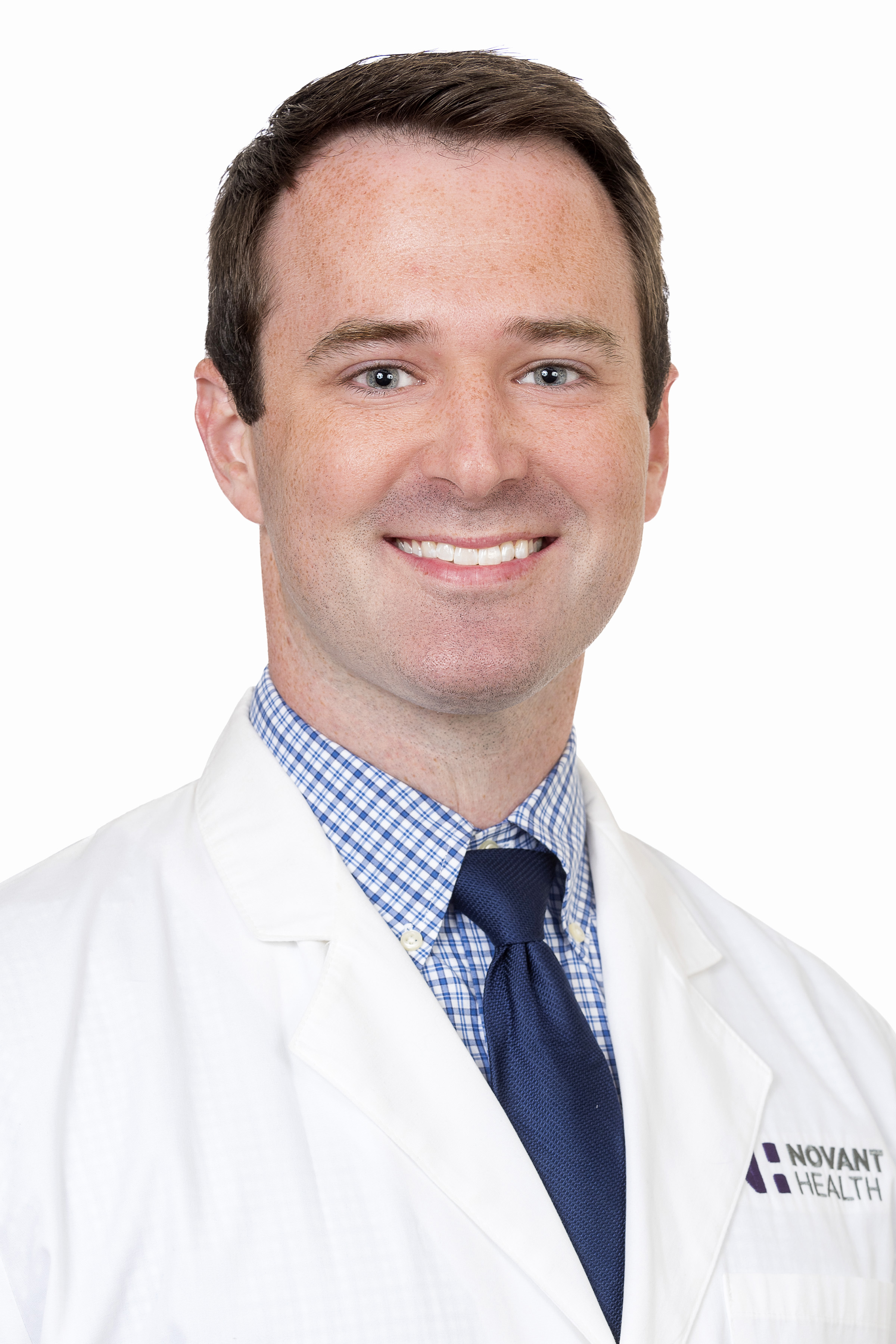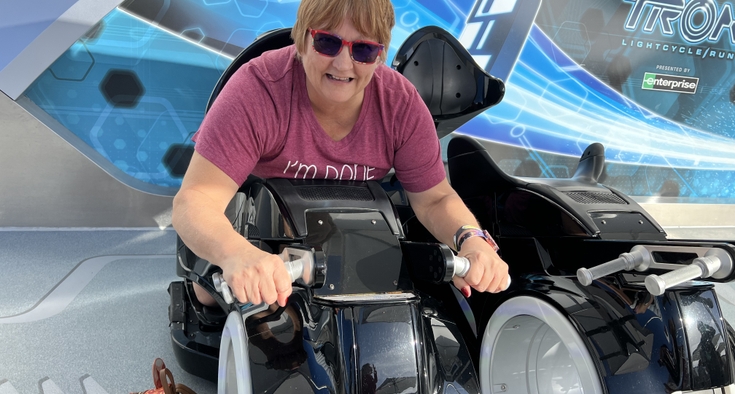If you’re experiencing back pain, you might not know where to turn. If you are in High Point or the surrounding area, neurosurgeon Dr. Michelle De Witt of Novant Health Brain & Spine Surgery and interventional spine specialist Dr. Kyle Sebastian of Novant Health Spine Specialists are ready to help you figure out what’s going on — and how to feel better.
Here they explain just how they do that.
Relief from back and neck pain.

What are the most common symptoms patients come to see you about, and what is causing their pain?
Sebastian: The No. 1 reason patients come to me is lower back pain. The most common causes for their pain are a herniated disc, a pinched nerve in the lower back, or arthritis in the lower back.
De Witt: My patients come in with lower back pain and radiating leg pain. They’ll also come in with chronic neck pain; weakness, numbness, and tingling in their legs or arms; and radiating pain in their arms.
Some of the main causes include arthritis in the neck or back, a pinched nerve or issues with the spine. Sometimes, patients will get arm symptoms coming from a shoulder condition, groin pain coming from a hip condition, or leg symptoms coming from diabetes, so some of what I sort out is, “Is this a spine issue or not?” Figuring that out helps me treat them correctly or refer them to a colleague if needed.

Describe how you help patients with pain, based on your different backgrounds.
De Witt: Obviously, as a surgeon, I do surgeries. I do back surgery to help with leg problems, and I do neck surgeries to help with arm or spinal cord problems. I’ll do spinal surgeries to fix issues going on in the spine. If the timing and conditions are right for surgery, that’s where I come in. But I want to emphasize that surgery isn’t usually your first-line treatment. Things like pain management with Dr. Sebastian come before me most of the time.
Sebastian: You put that perfectly. As an interventional spine specialist, my ultimate role, with no offense to Dr. De Witt, is to help patients avoid surgery. I make sure we have tried every other conservative management option patients have — optimizing medication, physical therapy or chiropractic care, acupuncture, massage therapy, nerve blocks and more.
If none of these help, I can step in with some more targeted procedural techniques like injections, ablations, or stimulator devices to try to manage pain while avoiding more invasive surgeries that can have complications for patients in the future.
If I’m in pain, I just want it to stop now. Which one of you should I start with?
De Witt: For pain, I’m probably not the best first line, although I may be the last. If your primary complaint is pain — just pain — try seeing a pain medicine provider like Dr. Sebastian for a few months. A lot of pain does settle down with time. If we can get you to a more manageable place with your pain and help you return to better functioning without surgery, that’s great.
Frequently, patients come to me and say, “I’m in so much pain, I would consider surgery since I have no other options.” I tell them, “Actually, you have a lot of options. Some are surgery, some are not.” There’s a whole checklist of options to make pain more manageable.
Sebastian: I agree. Sometimes when people hear, "We're sending you to pain management,” they think “pill mills” and say, “But I don’t want to take opioids.” That’s an outdated view of pain medicine. The field has developed so much over the last two decades, and we have so many techniques and technologies that can help you.
If you come see me, I will interview you about what you’re experiencing, combine that with imaging like MRIs or X-rays, and put together the most likely reason you are in pain. Then there are so many techniques and procedures we can try. For example, we could try an epidural, ablation or steroid injections — there are so many options out there. Your options will be individualized based on what you’re experiencing and what’s causing it.
I never promise to completely get rid of pain, but my goal is to hopefully reduce some of your pain, improve function, and improve your overall outlook on life. With treatment, a lot of my patients can get back to their daily activities and have a better mentality going through pain.
De Witt: But if you’re experiencing more than just pain — if you’re experiencing weakness in your arms or hands, imbalance like wobbling or falling over when you try to walk, or loss of function like bowel or bladder problems — you may not have a lot of things to try besides surgery. If that’s you, start with a surgeon like me.
When is back and spine surgery needed?
Sebastian: A lot of issues tend to be progressive over time, where one type of therapy might have worked in the past, but the patient’s condition may have progressed, which is why it no longer benefits them. For example, maybe physical therapy worked to control pain at one point, but now the condition has progressed, and it isn’t working anymore. So it’s my job to ask, what else can we try?
But if we have tried a lot of things and nothing has benefited the patient, if they have concerning findings on their exam like growing weakness or imbalance, if they have complaints about proceeding with more conservative management, or they say they’re ready for a surgical consultation, then we pull the trigger a little bit faster to see a surgeon like Dr. De Witt.
De Witt: I agree. If you’ve tried some things but were not able to get control of the pain and there’s a surgical solution that could help you, that’s when I say, “OK, is the time right for surgery now? If so, this is your option for surgery. These are the risks and benefits of that. Is that something you might want to do?” Based on their symptoms and their tolerance for the risk of surgery, I let them guide which way we go.
Novant Health Forsyth Medical Center has earned The Joint Commission’s Gold Seal of Approval for spine surgery in recognition of the hospital’s commitment to providing safe and quality patient care. TJC is one of the nation’s leading health care accreditation organizations trusted by over 24,000 organizations globally to uphold standards that improve patient outcomes.
Do you ever work together on the same patients?
De Witt: This happens all the time. We tell patients that we’re partners in their care, and each of us will take over as needed. We are a team, not two separate providers where one partner isn’t talking to the other.
If we don’t feel the patient is the best fit for us, we plug them in with the other provider. We have streamlined the process so that their next appointment can be scheduled before they even leave our office. I had a patient last week that I thought may be more appropriate for Dr. Sebastian to start with, and they were able to be seen the very next day.
Sebastian: Working together in a spinal clinic benefits patients because it focuses our time and efforts. Instead of wasting time with multiple issues and multiple complaints, we sit down and home in on what’s going on with their back and neck. We get a very focused history, do a very focused exam, and get a game plan for the patients. We get down to brass tacks, get efficient, and get results.
De Witt: And we can go back and forth, too. I have patients who come in to me for a surgical consult, and after hearing about surgery say, “I want to try something more conservative first.” I refer them to Dr. Sebastian, and say, “Let’s follow up in three months and see where you are. If your pain is better, you can feel free to cancel. Otherwise, we can check in: ‘How is your pain doing? Is it time for surgery now?’”
If you’re in pain, come see us and hear about your options. We both very much want to work with our patients, hear what’s bothering you, give you some education about what’s possible and what we can realistically achieve, and different pathways we can use to achieve this.













